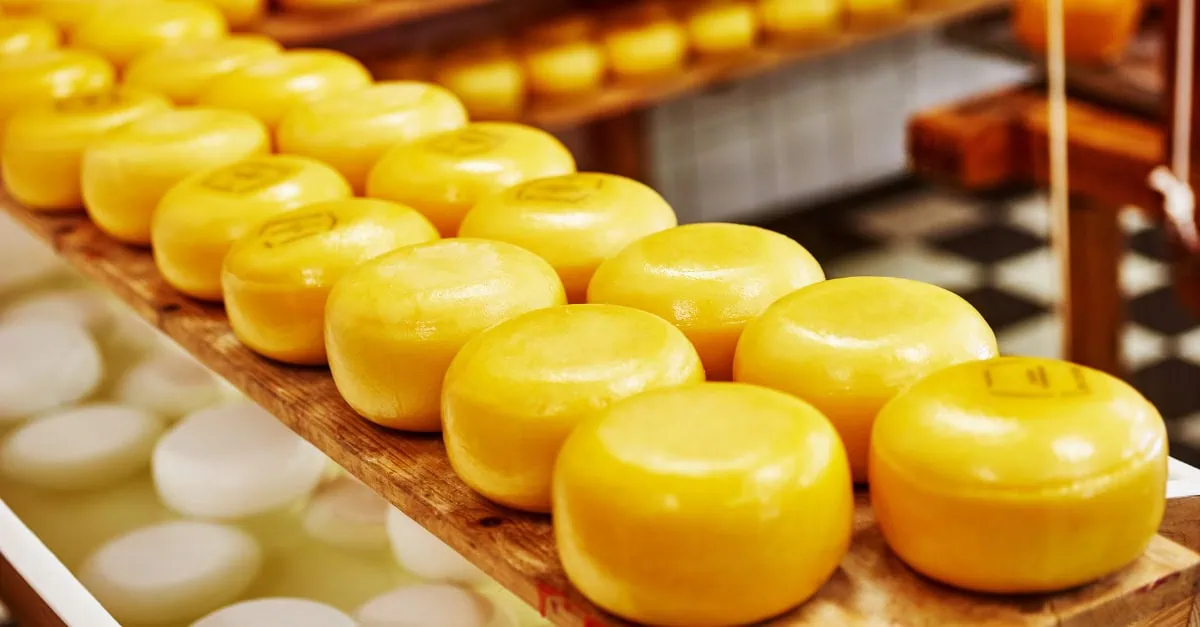European cheese markets continued their downward trend in early October as elevated supply levels met limited buyer demand, with manufacturers caught between high milk prices and falling cheese prices creating margin pressure across the industry.
Market dynamics shift to hand-to-mouth purchasing
The supply side of the cheese market still feels heavy, with spot market trades painting a clear picture: there’s a limited number of buyers while almost every supplier has cheese to sell.
Even though cheese demand is relatively lower compared to previous years, there is always at least a few buyers to pick up volumes when needed. However, today’s price level hurts for everyone on the producing side of the industry. Having to pay a milk price well above €0.50/kg while selling cheeses just above €0.40 hurts for every kilogram produced.
Selling spot milk does not yield a much better return. Some producers simply have more milk than they can process due to the higher intake of milk and milk solids. There’s a lot of milk, a lot of dairy commodities, and a lot of lower prices in today’s markets.
Cheddar markets weaken with Q4 volumes unsold
This week’s Vesper Price Index (October 1, 2025) decreased to €3750 | $4401/mt ($2.0/lb) EXW for cheddar. European cheddar markets are weakening, as a good chunk of Q4 volumes remain unsold.
With the average age of cheeses increasing, manufacturers are having to lower their offers in order to keep selling cheese and reduce stock pressure. The price range for cheddar increased over the last few weeks, with the bottom now at €3650/mt while the top of the market is still at €4300/mt.
In the United States, cheddar prices have been trending lower until last week’s cold storage report came in 3% higher than last year’s August, which interestingly pushed up prices. Fundamentally, however, the US cheese markets are still weak due to very strong production numbers and subdued domestic demand, meaning that a lot of exports take place at low prices.
European markets are feeling the pressure from the cheaper US cheddar at $3800/mt, so EU prices should be even lower before European producers can start exporting significantly more.
Emmental follows broader market weakness
This week’s Vesper Price Index (October 1, 2025) decreased to €4300 | $5047/mt ($2.29/lb) EXW for Emmental. Emmental prices are falling, in line with the broader European cheese market, which is still caught in an overall bearish market sentiment.
While Emmental-specific fundamentals aren’t significantly weaker than others, the product cannot escape the weakness from markets like Gouda and Mozzarella. Buyer reluctance spans all cheese categories, as buyers are delaying purchases and switch to monthly purchasing wherever possible in anticipation of further price declines.
Gouda prices decline as buyers shift strategies
This week’s Vesper Price Index (October 1, 2025) decreased to €3170 | $3720/mt ($1.69/lb) EXW for Gouda. Gouda markets throughout Europe feel heavy, with plenty of offers on the spot market and for Q4, while not too many buyers can take much more product.
Traditional quarterly buyers have either already locked in their volumes or changed to monthly contracts, and in some cases, monthly buyers have now moved to week-to-week purchasing to make full use of the lower prices.
Since production volumes of cheese have increased after the summer, manufacturers have had much more cheese to sell on spot markets. The average age of delivered cheeses has also increased over recent weeks, but some producers have less stock pressure than others.
Farm-gate milk prices at €520/mt or higher still lead to very high production costs of €4000/mt for Gouda, which hurts many cooperatives. At the same time, spot milk is sold at levels below €400/mt to smaller cheesemakers, which leads to a very low cost price of approximately €2800/mt.
Mozzarella markets show Q4 supply pressure
This week’s Vesper Price Index (October 1, 2025) decreased to €3120 | $3662/mt ($1.66/lb) EXW in Europe, whereas in the US, it is at €3230 | $3791/mt ($1.72/lb) EXW for Mozzarella.
Q4 markets are primarily full of offers rather than bids, although buyers can be found if sellers are willing to move down in price far enough. Just like with Gouda, buyers of Mozzarella have moved to hand-to-mouth purchasing to profit from the lowering prices throughout Q4.
Eastern and Southern European buyers are the ones who have switched to hand-to-mouth purchasing the most, which means they will still have some demand for the remainder of 2025. At the same time, some larger industrial buyers are incentivized by today’s prices to buy for Q1 2026 already, at prices very similar or even lower than today’s spot prices.
Producers are incentivized to sell forward for Q1 already if the price is similar to the Q4 price, but the remainder of Q4 is where most of the stock pressure is still the highest.
US Mozzarella prices also feel weak, as the production of cheese (including Mozzarella) keeps rising due to the strong milk output across the United States. Good exports have kept the US cheese market stable, but that advantage is shrinking fast now that European prices are falling very quickly.
For additional cheese outlooks and price forecasts, read the full market analysis here: https://app.vespertool.com/market-analysis/2322
